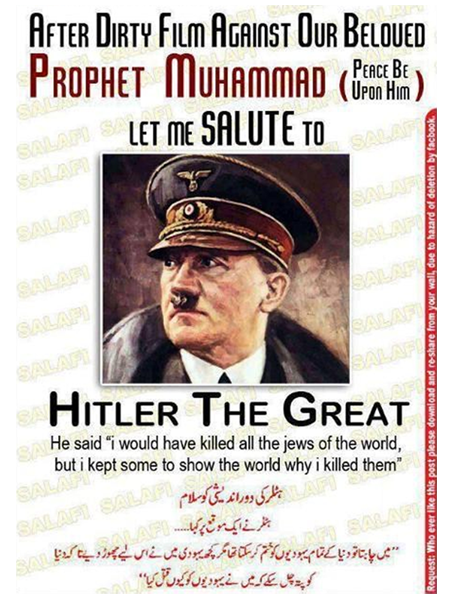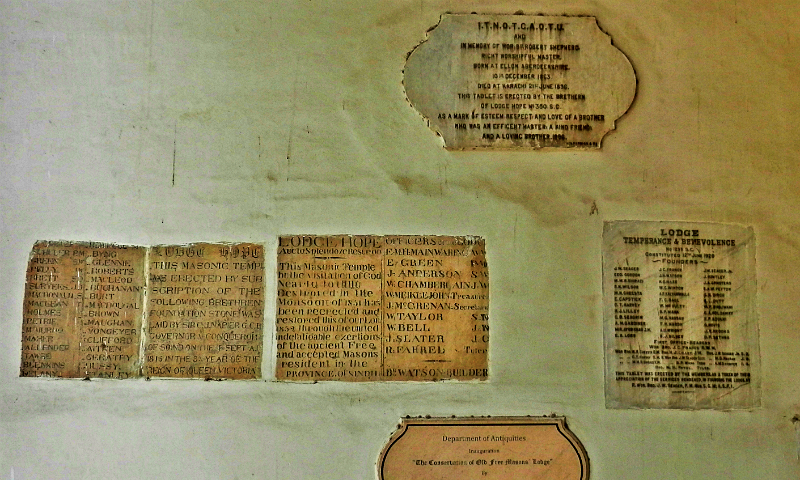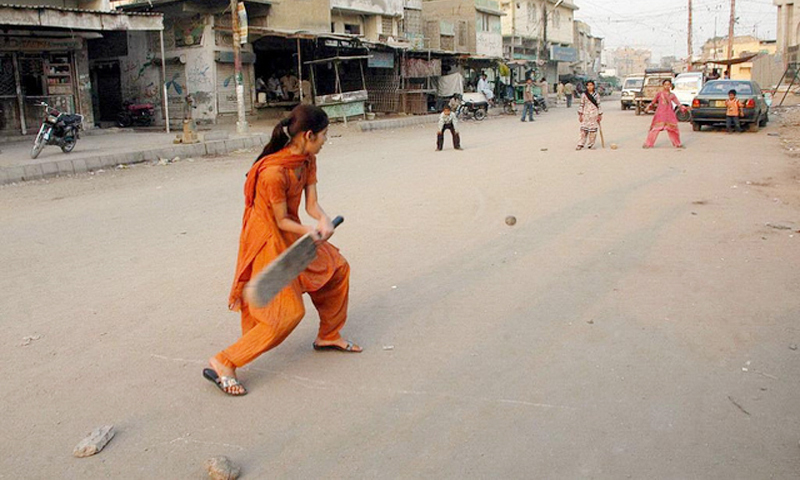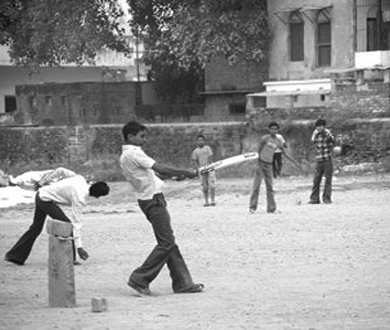
Watery-eyed gentleness co-exists with unabashed vulgarity in this new face of Ramazan.
Remember everything your parents, grandparents, maulvi sahab
and Islamiyat teacher taught you about Ramazan? Now try and forget it
please because there seems to be no room for those teachings anymore in
this country.
Tune in to one of our many local Ramazan transmissions on television and learn everything you need to know about the new face of the holy month.
We fast from sunrise to sunset, making sure our greed and desire to want stays under control, only to unleash it with a vengeance on one of Amir Liaquat or Fahad Mustafa’s Ramazan special shows, to name but two of the prominent ones.
On these shows, you are taught that nothing matters more than winning a Junaid Jamshed suit, a pair of Servis shoes and perhaps a ‘Voice ki gari’.
Forget teachings of charity and brotherhood – it’s time for you to compete with the person next to you, even if you have to make a complete fool of yourself on national television to defeat him or her.
Only recently, on ARY Digital’s Ramazan show ‘Jeeto Pakistan’, the host Fahad Mustafa had lined up a bunch of ladies to compete for a motorbike for their household.
In order to win, they had to cluck like a chicken.
Every year, brands such as Coca-Cola, Pepsi and Olpers can be seen in Ramazan-special advertisements that suddenly revolve around spirituality and religion. Islamic banking becomes even more popular and restaurants go all out to have grand all-you-can-eat deals to lure customers in.
The essence of simplicity and modesty we are taught to adopt is easily forgotten when religion starts being used a marketing tool. It is thus naïve to expect television channels to hold back from exploiting the religious sentiments of their audience.
Suddenly, popular actors from our drama industry who double as morning show hosts can now be seen adopting a new persona for their Ramazan transmission.
Forget about learned fresh faces, our drama heroes are enough to keep the show going in their stylish sherwanis and shiny kameezes. Criticising their wardrobe – a bit too much?
But then again, they are the face of Ramazan for their respective channels; their grandiosity along with their extravagant sets, contradict the very spirit of what they seem to celebrating.
But where so much hypocrisy plagues our nation, a little more won’t hurt. Especially not when it seems to excite so many around us.
“People love me,” says Amir Liaquat Hussain
Producers of such shows know exactly what to play at.
Package a show with very little substance, lots of free gifts, ‘religious-sounding’ background music and dot the set with an Islamic scholar here and there. There you have it – a Ramazan special show! No need to justify watching such content, it fits in perfectly with your pious routine this month.
Retail Ramazan
Where most shows thrive on humiliating and belittling an over-enthusiastic live audience, there are thankfully others that actually focus on the core teachings of Islam and the essence of this month. Too bad when you dig into ratings, you find them way behind the ones mentioned above.
Instead of enticing greed and desire in an audience by throwing ‘gifts’ at them, it perhaps would have been a refreshing change to have programs focusing on Pakistan’s leading philanthropists. Or perhaps allow the very same products and companies funding these shows, to instead call an audience actually in need of help, and make their Eid dreams come true by giving them those gifts.
14 days later: Entertainment stories dominate Ramazan
This way, they could continue to advertise their brands and actually do something good for society as well. Although if you were to stick with original teachings, doing work for charity looses its essence when publicised, for your intentions behind it may not remain true to the cause.
Or watch a man get his head shaved in front of a live audience in order to win a mobile? I guess not, for our masses only enjoy a show if it is infused with such belittling humour. Same goes for our political talk shows at night too, where millions tune in just to watch actors impersonating our politicians and making personal jabs and terrible jokes about the other.
These programs do not reflect our religious spirit or modesty or culture in any way. They instead display our lack of dignity and self-respect.
They allow mere television hosts to humiliate a naïve audience hungry for goodies.
They allow television producers to twist and manipulate religious sentiments and they allow corporations to use us, yet again, to make profit.
But they are not the only culprits. Until and unless the audience doesn’t protest, the show will go on.
Tune in to one of our many local Ramazan transmissions on television and learn everything you need to know about the new face of the holy month.
We fast from sunrise to sunset, making sure our greed and desire to want stays under control, only to unleash it with a vengeance on one of Amir Liaquat or Fahad Mustafa’s Ramazan special shows, to name but two of the prominent ones.
On these shows, you are taught that nothing matters more than winning a Junaid Jamshed suit, a pair of Servis shoes and perhaps a ‘Voice ki gari’.
Forget teachings of charity and brotherhood – it’s time for you to compete with the person next to you, even if you have to make a complete fool of yourself on national television to defeat him or her.
Only recently, on ARY Digital’s Ramazan show ‘Jeeto Pakistan’, the host Fahad Mustafa had lined up a bunch of ladies to compete for a motorbike for their household.
In order to win, they had to cluck like a chicken.
Yes, that seems to be the high point of our evenings these days, watching dolled up giggly ladies being made to do ‘cookroo coo’ in order to win a prize.It was inevitable perhaps.
|
A not-so-pretty cake-stuffing contest on ARY's Jeeto Pakistan programme
|
Every year, brands such as Coca-Cola, Pepsi and Olpers can be seen in Ramazan-special advertisements that suddenly revolve around spirituality and religion. Islamic banking becomes even more popular and restaurants go all out to have grand all-you-can-eat deals to lure customers in.
The essence of simplicity and modesty we are taught to adopt is easily forgotten when religion starts being used a marketing tool. It is thus naïve to expect television channels to hold back from exploiting the religious sentiments of their audience.
Suddenly, popular actors from our drama industry who double as morning show hosts can now be seen adopting a new persona for their Ramazan transmission.
Forget about learned fresh faces, our drama heroes are enough to keep the show going in their stylish sherwanis and shiny kameezes. Criticising their wardrobe – a bit too much?
But then again, they are the face of Ramazan for their respective channels; their grandiosity along with their extravagant sets, contradict the very spirit of what they seem to celebrating.
But where so much hypocrisy plagues our nation, a little more won’t hurt. Especially not when it seems to excite so many around us.
“People love me,” says Amir Liaquat Hussain
Producers of such shows know exactly what to play at.
Package a show with very little substance, lots of free gifts, ‘religious-sounding’ background music and dot the set with an Islamic scholar here and there. There you have it – a Ramazan special show! No need to justify watching such content, it fits in perfectly with your pious routine this month.
Retail Ramazan
Where most shows thrive on humiliating and belittling an over-enthusiastic live audience, there are thankfully others that actually focus on the core teachings of Islam and the essence of this month. Too bad when you dig into ratings, you find them way behind the ones mentioned above.
Instead of enticing greed and desire in an audience by throwing ‘gifts’ at them, it perhaps would have been a refreshing change to have programs focusing on Pakistan’s leading philanthropists. Or perhaps allow the very same products and companies funding these shows, to instead call an audience actually in need of help, and make their Eid dreams come true by giving them those gifts.
14 days later: Entertainment stories dominate Ramazan
This way, they could continue to advertise their brands and actually do something good for society as well. Although if you were to stick with original teachings, doing work for charity looses its essence when publicised, for your intentions behind it may not remain true to the cause.
But would such shows be as much fun as watching a 'learned religious scholar' stuff a man’s face with mangoes?
|
A brief clip of the infamous mango-stuffing incident during Amir Liaquat's 'Pakistan Ramazan' show
|
Or watch a man get his head shaved in front of a live audience in order to win a mobile? I guess not, for our masses only enjoy a show if it is infused with such belittling humour. Same goes for our political talk shows at night too, where millions tune in just to watch actors impersonating our politicians and making personal jabs and terrible jokes about the other.
These programs do not reflect our religious spirit or modesty or culture in any way. They instead display our lack of dignity and self-respect.
They allow mere television hosts to humiliate a naïve audience hungry for goodies.
They allow television producers to twist and manipulate religious sentiments and they allow corporations to use us, yet again, to make profit.
But they are not the only culprits. Until and unless the audience doesn’t protest, the show will go on.

 As the death toll in Gaza mounts and Israel shows no signs of
relenting, netizens across the world have taken to the internet to
express their outrage or support for 'Operation Protective Edge'.
Unfortunately, these passionate arguments often degenerate into
Islamophobia, anti-Arab racism and anti-Semitism.
As the death toll in Gaza mounts and Israel shows no signs of
relenting, netizens across the world have taken to the internet to
express their outrage or support for 'Operation Protective Edge'.
Unfortunately, these passionate arguments often degenerate into
Islamophobia, anti-Arab racism and anti-Semitism. 


 The beheaded statue of the first president of the Karachi Municipality
(1911-1922), who brought electricity to the city, Harchand Rai
Vishandas.
The beheaded statue of the first president of the Karachi Municipality
(1911-1922), who brought electricity to the city, Harchand Rai
Vishandas.
![The statue of Harchand Rai Vishandas in its original form [right] and how it is now [left]. –Photo courtesy of Khadim Hussain Soomro](http://i.dawn.com/large/2014/03/532feb8fd0ea8.jpg?r=2027201390)






 me of Ismailjee Ameejee Maternity Home - Eid Gah Maternity Home. —
me of Ismailjee Ameejee Maternity Home - Eid Gah Maternity Home. — 


 to be found, despite Syed having admitted to
have worked with Jam Ayoub in the Freemasons.
to be found, despite Syed having admitted to
have worked with Jam Ayoub in the Freemasons.



 Almost
Almost  e
e very major cricketing
star from Pakistan after the 1970s seems to have begun playing cricket
on the streets. -Photo by AFP
very major cricketing
star from Pakistan after the 1970s seems to have begun playing cricket
on the streets. -Photo by AFP
 As a kid in the 1970s I remember playing the game on the road just
outside my house (with a tennis ball).
Even in the 1980s when I was representing my college side in Karachi’s
intercollegiate tournaments at proper cricket grounds, many of us were
still taking part in tournaments played on roads and streets.
As a kid in the 1970s I remember playing the game on the road just
outside my house (with a tennis ball).
Even in the 1980s when I was representing my college side in Karachi’s
intercollegiate tournaments at proper cricket grounds, many of us were
still taking part in tournaments played on roads and streets.